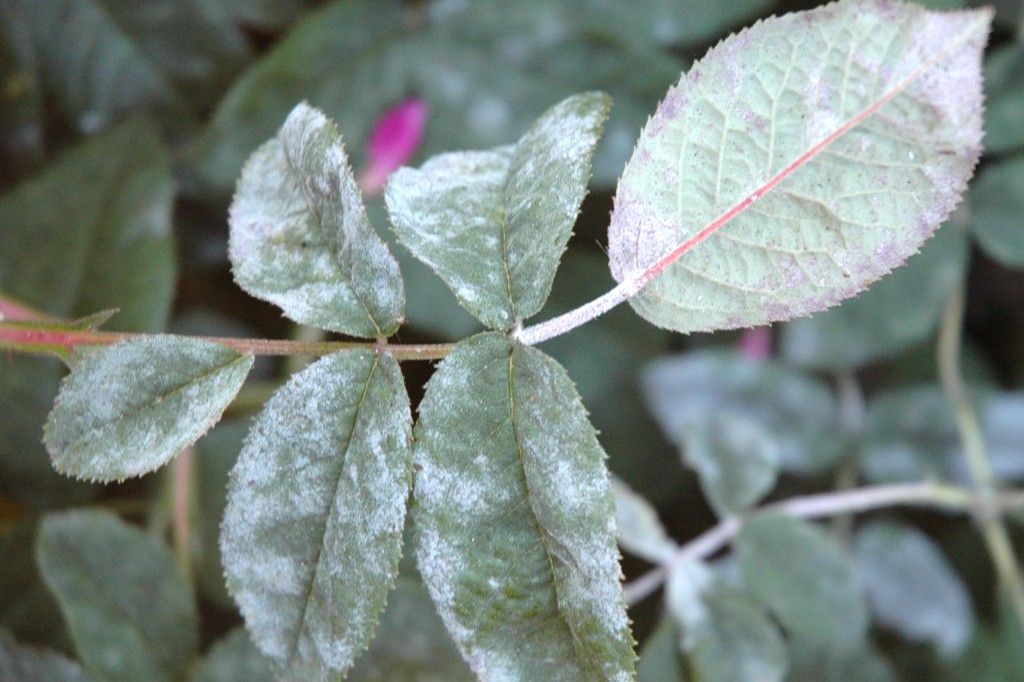Powdery mildew on plants is easy to identify, as this fungus makes the leaves look white.
Some plants are more susceptible than others and some varieties have more resistance to this disease than others. Crepe myrtles, honeysuckles, roses, lilacs, dahlias, monarda, phlox, and zinnias seem especially susceptible. The mildew likes warmth and humidity, but rarely kills a plant, though it is disfiguring and needs to be addressed.
To avoid contamination space garden plants so that they get good air circulation and also full sun, so the leaves dry out quickly after rain. Trim off leaves that are mildewed, and also pick up any diseased leaves that have fallen to the ground. Always avoid wetting the whole plant when watering and, if possible, water only the soil.
You can mix up a mildew deterrent of three tablespoons of baking soda, one gallon of water, and one tablespoon of Murphy's oil soap, and spray the leaves of plants to deter the fungus. The baking soda alters the pH, and the oil soap helps the spray stick onto the leaves of the plant.
Spray all susceptible plants in early spring as soon as they leaf out while it is cool every week or so until the temperature gets to 70 degrees Fahrenheit, then stop spraying once the weather gets hotter, since this potion will then burn the leaves of your flowering plants.
This is Moya Andrews, and today we focused on powdery mildew.










